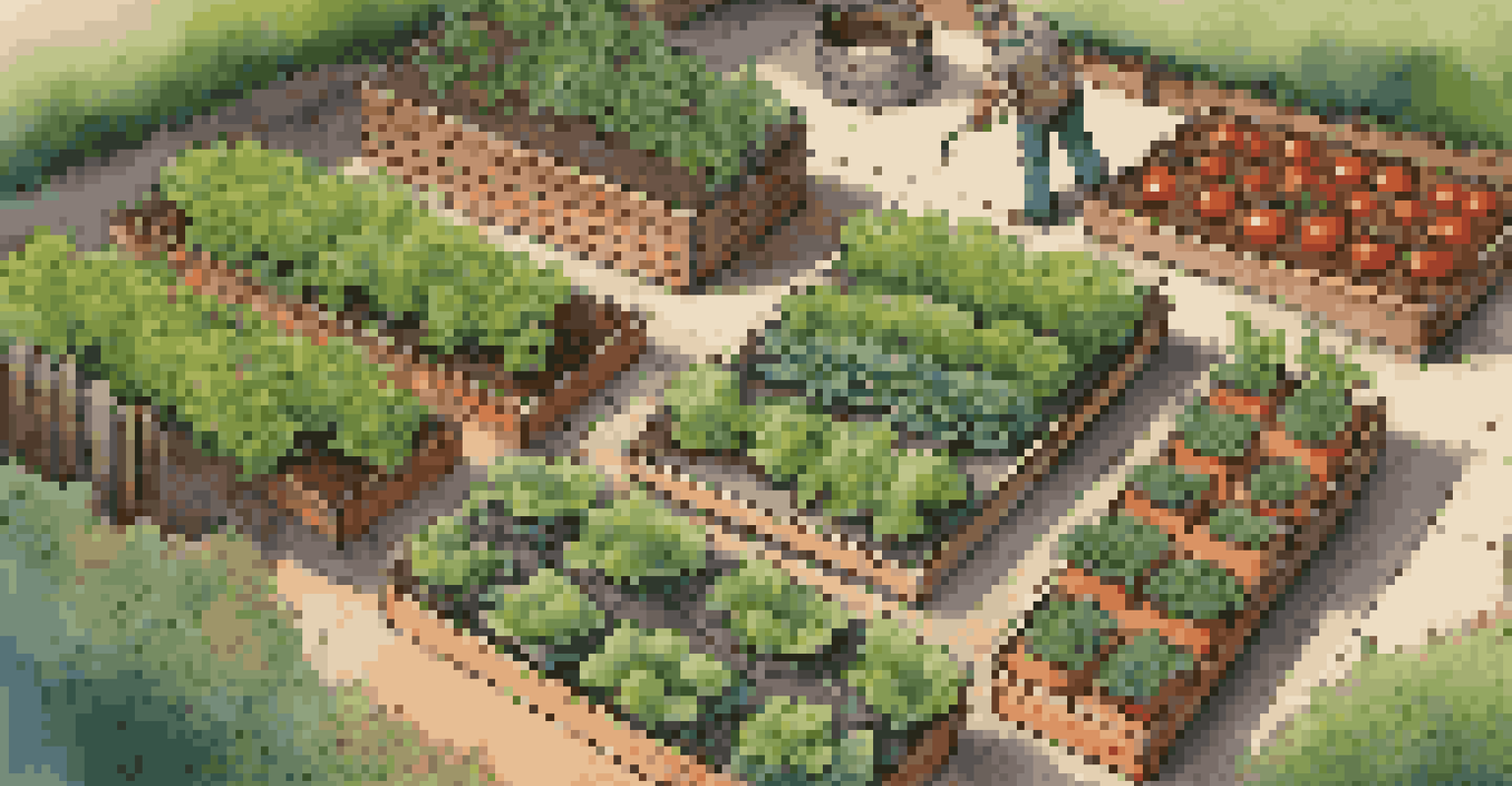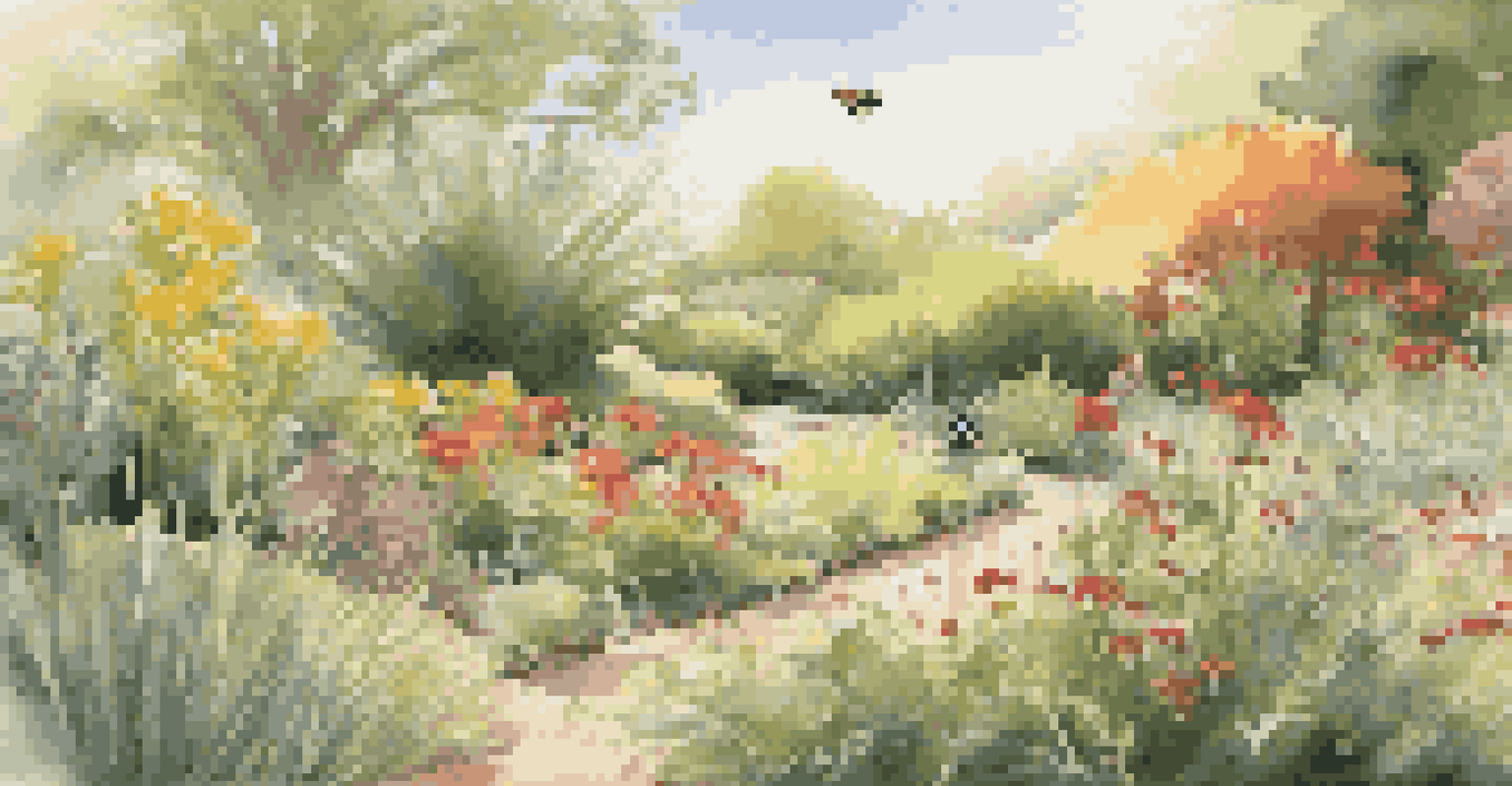Building a Sustainable Garden: A Comprehensive Guide

Understanding the Basics of Sustainable Gardening
Sustainable gardening focuses on practices that maintain ecological balance. This means growing plants in a way that supports the environment and conserves resources. Think of it as gardening with a conscience, where every choice you make benefits both your garden and the planet.
Gardening is a way of showing that you believe in tomorrow.
At its core, sustainable gardening emphasizes native plants, organic practices, and biodiversity. By choosing plants that naturally thrive in your area, you reduce the need for chemical fertilizers and pesticides. This not only makes your garden healthier but also creates a habitat for local wildlife.
Ultimately, sustainable gardening is about working with nature rather than against it. Embracing this mindset can lead to a thriving garden that not only looks beautiful but also contributes positively to your local ecosystem.
Choosing the Right Location for Your Garden
The first step in creating a sustainable garden is selecting the ideal location. Look for a spot that receives ample sunlight, as most plants thrive in bright conditions. However, also consider areas that might provide afternoon shade, especially for plants that prefer cooler temperatures.

Soil quality is another critical factor. Conducting a soil test can help you determine its pH and nutrient levels, allowing you to amend it as needed. Healthy soil is the foundation of a sustainable garden, supporting plant growth and reducing the need for synthetic fertilizers.
Embrace Native Plants for Success
Choosing native plants supports local wildlife and requires less maintenance, creating a more sustainable garden.
Lastly, think about water drainage and accessibility. Choosing a location that allows for natural water flow will help prevent issues like flooding or erosion. Plus, you’ll want to ensure that you have easy access for planting, weeding, and harvesting.
Selecting Native Plants for Your Garden
Native plants are the unsung heroes of sustainable gardening. These plants are adapted to your local climate and soil conditions, making them easier to grow and maintain. By choosing native species, you’ll also support local wildlife, including pollinators like bees and butterflies.
The greatest threat to our planet is the belief that someone else will save it.
When selecting native plants, consider the specific needs of your garden, such as sunlight, moisture, and soil type. A well-chosen mix of plants can create a vibrant, diverse ecosystem. For example, pairing flowering plants with grasses can provide shelter and food for various creatures.
Additionally, native plants often require less water and are more resistant to pests and diseases. This means you’ll spend less time watering and worrying about chemical treatments, leading to a healthier garden and a more enjoyable gardening experience.
Implementing Water Conservation Techniques
Water conservation is a key component of sustainable gardening. Techniques like rainwater harvesting can help you capture and use natural rainfall, reducing your reliance on municipal water supplies. Setting up a rain barrel is a simple yet effective way to start.
Another method is to use drip irrigation, which delivers water directly to the plant roots, minimizing waste. This technique ensures that your plants receive the moisture they need without saturating the surrounding soil. It’s a win-win for both your garden and your water bill.
Practice Water Conservation Techniques
Implementing methods like rainwater harvesting and drip irrigation helps reduce water usage and promotes garden health.
Lastly, consider mulching your garden beds. Mulch helps retain soil moisture, suppress weeds, and regulate temperature. By keeping the soil covered, you’ll find that your plants thrive even during dry spells, making your garden more resilient.
Creating a Composting System for Your Garden
Composting is a fantastic way to recycle kitchen scraps and yard waste while enriching your garden soil. By creating your compost pile, you can transform organic materials into nutrient-rich compost that benefits your plants. It’s like giving your garden a delicious, homemade meal!
To start composting, gather materials such as fruit and vegetable scraps, grass clippings, and dried leaves. Balancing green materials (like kitchen waste) with brown materials (like dry leaves) will help your compost break down efficiently. Regularly turning the pile ensures that air circulates, speeding up the decomposition process.
As the compost matures, you’ll notice a rich, dark substance that can be mixed into your garden soil. Not only will this improve soil structure, but it will also provide essential nutrients for your plants, reducing the need for chemical fertilizers.
Implementing Pest Management Strategies
Managing pests in a sustainable garden doesn’t mean resorting to harmful chemicals. Instead, consider integrated pest management (IPM), which combines different strategies to control pests while minimizing harm to the environment. This approach focuses on prevention, monitoring, and intervention only when necessary.
Encouraging beneficial insects, such as ladybugs and lacewings, can naturally keep pest populations in check. Planting a diverse range of flowers can attract these helpful allies, creating a balanced ecosystem in your garden. It’s nature’s own pest control!
Create a Composting System
Starting a compost pile transforms kitchen scraps into nutrient-rich soil, enhancing your garden's sustainability.
If you do encounter pest issues, there are eco-friendly solutions like neem oil or insecticidal soap. These options are less harmful to beneficial insects and the surrounding environment. By taking a proactive approach, you can maintain a healthy garden without compromising sustainability.
Maintaining Your Sustainable Garden Year-Round
A sustainable garden requires ongoing care and attention, but the effort is well worth it. Regular maintenance tasks like weeding, pruning, and mulching help keep your garden healthy and thriving. Setting aside a little time each week can make a big difference in the long run.
Seasonal changes also present opportunities for enhancing your garden's sustainability. For instance, in the fall, consider planting cover crops that enrich the soil and prevent erosion during the winter months. This proactive approach sets the stage for a vibrant garden come spring.

Finally, don’t forget to celebrate your garden’s progress! Keep a gardening journal to track what works and what doesn’t. This reflection can guide your future gardening decisions, helping you create a sustainable oasis you can be proud of.